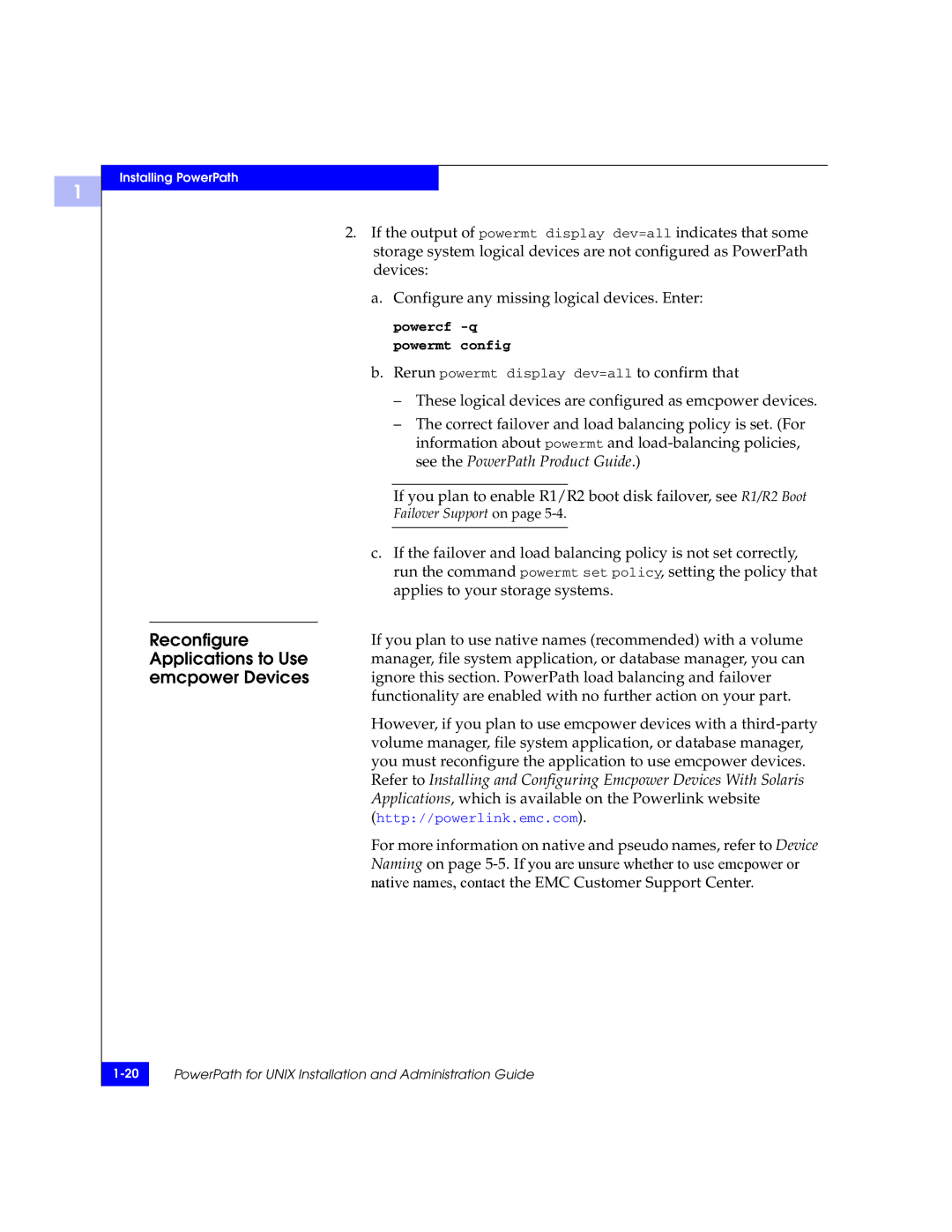
1
Installing PowerPath
2. | If the output of powermt display dev=all indicates that some | |||
|
| storage system logical devices are not configured as PowerPath | ||
|
| devices: | ||
|
| a. Configure any missing logical devices. Enter: | ||
|
|
| powercf | |
|
|
| powermt config | |
|
| b. Rerun powermt display dev=all to confirm that | ||
|
|
| – These logical devices are configured as emcpower devices. | |
|
|
| – The correct failover and load balancing policy is set. (For | |
|
|
| information about powermt and | |
|
|
| see the PowerPath Product Guide.) | |
|
|
|
|
|
|
|
| If you plan to enable R1/R2 boot disk failover, see R1/R2 Boot | |
|
|
| Failover Support on page | |
|
|
|
|
|
|
| c. If the failover and load balancing policy is not set correctly, | ||
|
|
| run the command powermt set policy, setting the policy that | |
|
|
| applies to your storage systems. | |
|
|
|
|
|
Reconfigure | If you plan to use native names (recommended) with a volume | |||
Applications to Use | manager, file system application, or database manager, you can | |||
emcpower Devices | ignore this section. PowerPath load balancing and failover | |||
|
| functionality are enabled with no further action on your part. | ||
|
| However, if you plan to use emcpower devices with a | ||
|
| volume manager, file system application, or database manager, | ||
|
| you must reconfigure the application to use emcpower devices. | ||
|
| Refer to Installing and Configuring Emcpower Devices With Solaris | ||
|
| Applications, which is available on the Powerlink website | ||
|
| (http://powerlink.emc.com). | ||
|
| For more information on native and pseudo names, refer to Device | ||
|
| Naming on page | ||
|
| native names, contact the EMC Customer Support Center. | ||
PowerPath for UNIX Installation and Administration Guide | |
|
|
